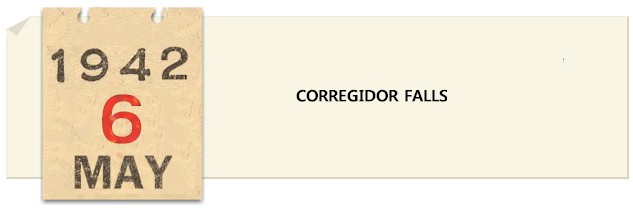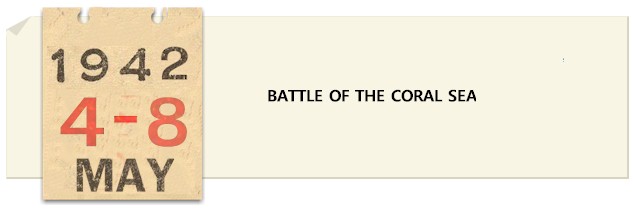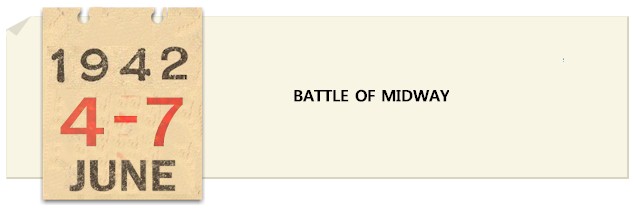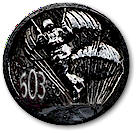|
2 March 1942

|
The history of the 503rd Parachute Infantry Regiment begins
when the 503d Parachute Infantry Battalions were redesignated as the
1st and 2nd Battalions respectively of the two-battalion 503d PIR. |
|
|
|
|
|
 |
|



6 June 1942

|
In the meantime, the parent unit remaining at Ft. Bragg was brought
to a full strength three battalion regiment on 6 June 1942 when the 1st
Battalion, 502nd PIR is redesignated 3rd Battalion, 503rd PIR. At this
time they expect to embark for England as soon as transportation is
available. Soon the 503rd would be reunited. The regiment was issued
wilt cloth. |
|
|
|
|
|
 |
|

10 June 1942

|
The original 2nd Battalion (the former 504th PIB) depart for England
on 4 June 1942 under the command of Lt. Colonel Edson D. Raff. They
land in Gouroch, Scotland on 10 June 1942 and are then stationed at
Hungerford, England where they train with Major General Sir Frederick
A. M. “Boy” Browning’s 1st British Airborne Division. They are the
first U.S. parachute unit to be shipped overseas during WWII. |
|
|
|
|
|
 |
|
15 October 1942

|
The two battalions, along with “A” Company, 504th PIR, detrain at Camp
Stoneman, California. |
|
|
|
|
|
 |
|
20 October 1942

|
The two battalions, along with “A” Company, 504th PIR,
embark upon the Dutch freighter, S.S. POELAU LAUT, now in service as a
U.S. Army
Transport. The boat sails for an "unknown destination," which will turn
out to be Balboa, Panama. |
|
|
|
|
|
 |
|
30 October 1942

|
The two battalions, along with “A” Company, 504th PIR,
Balboa, Panama take on board
the 501st PIB minus “C” Company.
|
|
|
|
|
|
 |
|
7 November 1942

|
Soon after dark on 7 November 1942, the
battalion take off from Land’s End, England. The thirty-nine C-47’s
head for La Senia, Algeria. The pre-arranged “peace plan” has failed. The
widely scattered battalion suffers casualties, both KIA’s and WIA’s.
After reorganizing, the battalion proceed to Maison Blanche. They take
off from the airport there on 15 November and jump at Youk-Les-Bains on
the Tunisian border. They are the first in Tunisia to contact Rommel’s
Africa Corps, and are the first into Gafsa. The battalion fight at Kasserine Pass, Feriano, Sheitla, and the first in battle at Faid Pass.
A demolition team makes the third combat jump at El Dejmafter in December
1942. |
|
|
|
|
|
 |
|
2 December 1942

|
A fter
pulling in to both Brisbane and Townsville without debarking, the men
find themselves in tropical Cairns, Queensland, Australia. The
battalions then moved by truck to nearby Gordonvale where they set up a
base camp.
At this time it appeared the 503d
PIR had two second Battalions, one in Australia and one in Africa.
Colonel Raff used the designation of 2nd Battalion, 503d PIR in his
book ‘We Jumped to Fight’
which was written in 1944. In “Notes and Acknowledgements,” the last
section of his book, he states,
“The Regimental
designation of the 2nd Battalion, 503d Parachute Infantry was
changed by the War Department just prior to the North African
invasion. News of the change reached us later in the campaign. For
that reason the former designation, under which we operated has been
retained throughout the book.”
Colonel Morton Katz (then a 2nd Lt.) joined the 2nd
Battalion, 503rd PIR (Africa) during October 1942. He states,
“For the last half of my service with the 509th, I was Battalion
Adjutant, and had access to all records. When I was S-2 at the
Venafro operation, the S-2 staff made up a V-Mail roll of the
complete operation, and still have it.”
Colonel Katz had also stated,
“When the original 2nd Battalion, 503d
Parachute Infantry took off from the Land’s End, England under the
command of (then) LTC Edson D. Raff, Jr. the night of 1 November
1942, the designation had not changed.
The designation was changed early in 1943 while the
battalion was stationed at Maison Carree, Algeria, a small town outside
Algiers. The battalion was redesignated the 2nd Battalion, 509th
Parachute Infantry (and there never was a 509th regiment) before moving
to Boufarik, Algeria in late winter.”
Lt. General William P. Yarborough, who served much of the
time with the 2nd Battalion, 503rd PIR/509th PIB (for a short time 2nd
Battalion, 509th PIR) supports Katz.
“I have faith in Morton Katz’s version
both because his memory has been reinforced by written material made
by him contemporaneously.”
If there was some time lag between
the change in designation of the 2d Bn 503d to 2d Bn 509th it was
understandable in light of all the massive personnel actions that were
part of the United States' unprecedented mobilization effort.
Yarborough further recalled,
“In my book ‘Bailout
Over North Africa’ I included a copy of a
letter from British Maj. General F. A. M. Browning to Lt. Col. Doyle
Yardley addressed to the 2nd Bn., 509th Parachute Regiment. The
letter was dated 6 June 1943. On the other hand, the French order
allowing the wearing of the 3rd Zouaves Badge is dated 6 February
1944 and is directed to CO 2d Bn., 503rd Parachute Regiment. In
my book I also state that order changing the designation of the 2d
Bn 503rd PIR to 2d Bn 509th PIR did not reach England until after
the unit left for North Africa.”
Charles H. Doyle, the historian of the 509th Parachute
Battalion, recently said,
“I had many arguments with LTG Smiling Jack Tolson over the
redesignation of the original 2/503rd. Finally I sent him, just
before he died, the original order dated October 1942. That’s a
month before the African jump. These orders did not catch up to the
battalion until our rear echelon caught us at Maison Carrẽe.
Since Col. Raff was at Fiad Pass with his task force he had no idea,
hence his using the 503rd in his book.
So in all reality it was the 2/509th that
took off from England and not the 2/503rd. Since we were under the
command of the British 1st Airborne, I would seriously doubt that
our report would be shipped to the 503d Regiment in the Pacific. In
receiving the battalion records from the Achives from October 1942
those state 2/509th except for those records sent to the Pentagon
from England - yet with an “*” at the bottom they say changed to
2/509 as of October 1943.
Since Marty Katz did not become the Battalion Adjutant until France
he would not have been privy to any of the above, as I found out
once I started the research for our history book.
The 2/509 was dropped in Italy once it became clear that two more
battalions would not join."
Lieutenant General John Tolson
left a letter [1] addressed
to Mr. Robert K. Wright, Jr., U.S. Army Center of Military History
attempting to correct a large number of errors in the official history
of the 503rd PIR. He knew that they did make errors, and he learned that
they never admit them. In it he states,
“After the 2nd Bn., 503rd Parachute Infantry Regiment move to
England, it retrained the designation for a long time. In fact, just
as soon as shipping could be made available, the remainder of the
regiment was scheduled to join its 2nd Battalion in England during
the summer, 1942. Because of this fact when the 3rd Battalion 503rd
Parachute Infantry Regiment was formed in May – June 1942 it was
accomplished by rushing to Ft. Bragg from Ft. Benning the 1st
Battalion of the 502nd Parachute Infantry Regiment, less the
Battalion commander, his staff, and the company commander to become
the 3rd Bn. of the 503rd. I believe that the Battalion in England
was still the 2nd Battalion of the 503rd. I believe that the
Battalion in England was still the 2nd Battalion, 503rd parachute
Infantry Regiment when it jumped in North Africa.”.
The other Lieutenant Colonel in the 503rd PIR in late
1942, still alive at time of writing, is Joe S. Lawrie, U.S. Army Major
General (Retired). Louis Aiken, one of our 503d brethren, tells of a
telephone conversation [2] he
had with General Lawrie.
“General Lawrie (then Lt. Col.) told me
that he was aware of the fact – as were others that the 503d PIR was
carrying 4 Battalions for periodic reports to higher headquarters,
even after we reached Australia. He stated that he and others
thought this was unique because one of these Battalions was in
England and Africa. He believes these reports were made for a period
of 4-6 months.”
Bennett Guthrie, the 503rd PIR’s most noted author, who
wrote “Three Winds of Death”, spent a great deal of time and
expended much effort researching 503rd PIR records. He writes [3]
that after the African actions, the original 2/503rd sent their casualty
reports to the 503d PIR in Australia.
Sergeant Roy Guy, long-time first sergeant of “D”
Company, told Aiken that there was much confusion for a period of time
after they reached Australia during late 1942. He said “D” Company was
designated as “F” Company at one time. Donald Abbott, former platoon
leader in “D” Company, has a letter written to his wife from Australia
in December with an “F” Company address.
John Lindgren found a War Department letter [4] which
reads as follows:
"2nd Battalion will transfer, less personnel and equipment from England
to Australia, Effective 2 November 1942.”
Several unit histories also detail the arrangements. The
Office of the Commanding Officer , Headquarters 503rd REGIMENTAL COMBAT
TEAM records the organizational change in organization in the following
terms;
“2nd
Battalion, 503rd PIR ordered POE Letter, AG 370.5 (3-12-42) MC-E-M,
22 May 1942, and 501st Parachute Battalion redesignated 2nd
Battalion, 503rd by WD letter, AG 320.2 (11-3-42)."
2nd Battalion
History
“January 1,1943 by secret letter War Department A.G. 370.5 (11-16-42) dated November 17, 1942.
Subject: Transfer of Prcht units, Hq Co, Co “A”, and “B” of the 501st Parachute Battalion were respectively redesignated Hq & Hq, Co “E”, and
Co “F”. 503rd Prcht Inf. Regt. “A” Co 504 Prcht. Inf. was redesignated Co. "D" 503d Prcht. Inf" ;
"D"
Company History
“31 December 42: “A” Company, 504th Parcht. Inf. redesignated as Company
“D”, 503d Prcht. Inf. (Secret letter WDGO, file No. AG 320.2 (11-3-42)
O-B-1-E-M dated November 8, 1942). Strength 8 Off. & 119 Em.”
"F" Company History:
“On the 31st of December, 1941, Secret Letter, WDAGO file Number AG 320-2-11-42 OB-1-E-M, dated November 8,1941, Subject: Transfer of
Certain units, designated Company “B”, 501st Parachute Battalion as Company “F”, 503rd Parachute Infantry effective November 3, 1942. We
have come into our own.”
The two dates of 1941 are
obvious errors. They should read 1942. In view of the attitude of the
501st men the “We have come into our own” is a later addition. In
fact the writing was probably done at a later date. The 501st men
considered themselves to be “the parachute battalion” and they were not
happy to be incorporated into a regiment with lesser mortals. [5]
A
key example of 501st attitude is illustrated in the following entry:
“20 October 43 – Holiday today. One year ago today, two battalions and RHQ and Service Company left the USA. 1 Nov should be a day of mourning
for the 501st Prcht. Bn. On that day, it embarked at Balboa, Canal Zone
(1942) and joined the regiment aboard ship bound for Australia, Bless
‘em all.” [6]
This is essentially the information known today which covers the redesignation of the original 2nd Battalion, 503rd Parachute Infantry
regiment. Clearly orders were issued by the Adjutant General
redesignating this battalion, though the date is less clear – at least
to some whose faith in the system is not strong. It’s also evident that
those within the 503rd units affected did not know that some of them
were not what they thought they were. This is the reason the close-knit
family of paratroopers who served in 1942 have a problem believing in
the exactitude of a system which concludes officially that their beloved
unit made one combat jump and one initial assault during WWII.
But as the great 2nd Battalion Adjutant said,
“Bless ‘em all.”
The formation of the 503d Parachute Infantry Regiment
was fraught with diversity and disunity. Usually, a regiment is formed
with a cadre of officers and enlisted men from an existing unit. This
provides the framework to be filled out with new men. The 503d was
formed by combining existing units, each with its own unit loyalty and
sense of independence.
Originally, the 503d was a two battalion regiment formed
2 March 1942 by combining the 503d and 504th Parachute Battalions. The
503d became the First Battalion and the 504th the Second Battalion.
Before they could be welded into a solid unit the Second Battalion,
commanded Lt. Col. Edison D. Raff, departed for Europe on 2 May 1942, where
it eventually became the 509th Parachute Battalion.
The Third Battalion, 503d Parachute Infantry Regiment was
activated 4 June 1942 under
the command of Major John J. Tolson III. This battalion was formed by
502nd troops: Headquarters Company, 502nd became Headquarters and
Headquarters Company, Third battalion, 503d; “A” Company became “G”
Company; “B” Company became “H” Company; and “C” Company became “I”
Company.
The Regiment (First and Third Battalions) departed Fort
Bragg 19 October accompanied by General Ridgeway’s “best” rifle
company, “A” company, 504th Parachute Infantry Regiment. The temporary
commander was Major Tolson, as Colonel Kenneth Kinsler, 503rd commanding
officer, had gone on ahead to Australia by air.
The two battalions and “A” Company departed San Francisco
20 October aboard a converted freighter, the Dutch ship “SS
Poelau Laut.” On 1
November they docked at Balboa, Canal Zone and
took aboard the 501st Parachute battalion, minus its “C” Company. “A”
Company, 501st became “E”Company, 503rd; “B” Company, 501st became “F”
Company, 503rd; and “A” Company, 504th became “D” Company, 503rd.
The new regiment was actually four units: the 501st
Parachute Battalion; the 1st Battalion; 502nd Parachute Regiment; the
503rd Parachute Battalion; and “A” Company, 504th Parachute Infantry
Regiment. Each knew in their hearts that they were superior to the
others; Each were not happy to be incorporated into a regiment with
lesser mortals. An ill-deserved fate had forced them into association
with the other units. Distrust, jealousy, suspicion were the order of
the day.
Now the 503rd was a full regiment… at least on the books
it was.

The change of organization was not accomplished entirely
with the same grace that the Adjutant General’s office might have
desired. It was well known at those lofty heights of command that when
units were reorganized, there were opportunities to dispose of
battalions and personnel who were considered to be operating at less
than maximum efficiency – even when that was not the case. A similar
factor sometimes applied to officers who had developed a familiar
command structure – they would bring in their own group of familiars.
It was an all too human frailty, and rank has always had its privileges.
With Colonel Kinsler as part of the advance party in
Australia, the senior officer in command was Lieutenant Colonel Tolson.
As the combined units (1st and 3rd battalion, 503d and “A” Co., 504th)
waited to entrain, a sedan flying two stars pulled up and Tolson was
told to report to Major General Matthew Ridgeway, commanding General of
the 82d H.D.
In his direct manner, Ridgeway informed Tolson that he
was to give this message to the C.O., 503rd. He knew it was ‘customary’
for another unit to give up their worst unit when ordered to transfer
one.
“This is not the case here.” Ridgeway said “This is the
best company I have in the division." [7]
In the event that Tolson had not understood the position
with sufficient clarity, Ridgeway continued that he also knew it was
typical for a senior commander to remove the NCO’s and officers and to
replace them with those he knew. He instructed Tolson to tell Kinsler he
would be keeping an eye on “A” Company because they had excellent
leaders, and “it better not happen.”
Unfortunately, something may have been lost in the
translation, for Ridgway’s exhortation appears to have become more of an
advisory opinion.
When the 503rd picked up the 501st at Balboa, they had
not gone far before Jones (now in command because of seniority) called
in Capt. Ralph
Bates (a great
Kentuckian) and told him he wanted Sgt. Roy
Cruz reduced in rank
because he had a better NCO from the 501st to serve as 1st Sgt. Captain
Bates, standing his ground, refused and said, “You will relieve me
first.”
Once they got to Australia, and Tolson had the
opportunity to pass the Ridgway message along, things were quiet for a
time. After Jones become C.O., the matter was raised again. Bates would
not be shifted. Jones, unimpressed with obstinacy from a mere Captain,
made it known that he might find himself obliged to court-martial Bates.
Bates, not averse to skilful maneuver himself, called Jones’ bluff,
requesting a court-martial. Col. Jones apologized and suggested “Let’s
forget our dirty laundry.” Bates, who knew the system at least as well
as Jones, knew the matter would not be resolved by procrastination or
avoidance, and declined to let the matter drop. When the issue did come
to the attention of 6th Army, Gen. Krueger sent a colonel to visit
Bates, suggesting that the request might be dropped. Bates refused.
Exploring the alternatives, the colonel asked Bates what it would take
to end the impasse. “A transfer,” was Bates curt response. [8]
Ultimately Ralph Bates, who had been appointed to command
"A" Company 504th Prcht. Inf. when it was activated at Ft. Benning on 1
May 1942, was allowed to pick a spot in a headquarters in Australia.
Fortunately too, his star would rise again, and the 503d would have the
benefit of his talent and experience again. |
|
|
|
|
|
 |
|
|

![]()

